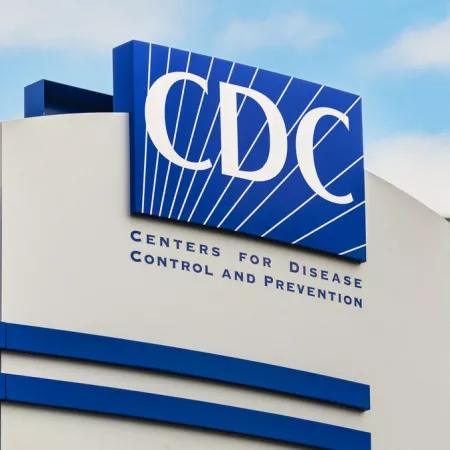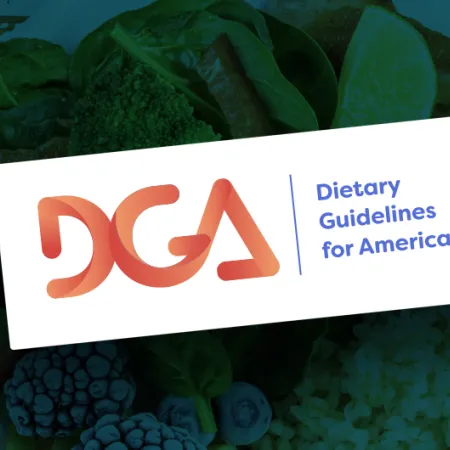Why the Dietary Guidelines should keep saturated fat limits

New Africa - stock.adobe.com.
The next version of the Dietary Guidelines for Americans may revise longstanding recommendations to limit saturated fats. However, the science is clear: Saturated fat consumption raises heart disease risk. Changing saturated fat recommendations in the Dietary Guidelines could be detrimental to public health and the millions of Americans who rely on federal nutrition programs.
Recommendations to limit saturated fat could be removed from the Dietary Guidelines
The Dietary Guidelines for Americans (DGA) are currently being updated and anticipated to be released by the end of 2025. Health Secretary Robert F. Kennedy, Jr., has stated that the new Guidelines will "stress the need to eat saturated fats, dairy, good meat, fresh meat and vegetables," most of which breaks with decades of nutrition guidance. The recommendation to limit saturated fat is one of the most long-standing recommendations in the DGA, consistent with scientific evidence and guidance from major public health organizations. Accordingly, the DGA should follow the Dietary Guidelines Advisory Committee’s advice to “maintain current limits on added sugars, saturated fat, and sodium.”
The current set of guidelines (2020 DGA) recommends limiting saturated fat to less than 10 percent of daily calories, which equates to 200 calories (or 20 grams) in a diet of 2,000 calories.
Experts have recommended limiting saturated fat for years
The science is clear: Saturated fat consumption increases heart disease risk. Saturated fat raises—and polyunsaturated fat lowers—LDL (“bad”) cholesterol. And lowering your LDL cholesterol cuts your risk of heart disease, the leading cause of death in the US. Based on reviews of all relevant, high-quality studies, the 2020-2025 DGA and the 2025 Dietary Guidelines Advisory Committee report recommend limiting saturated fat to less than 10 percent of calories per day starting at age two. Experts recommend replacing saturated fats (like those found in red meat, full-fat milk, cheese, butter, coconut oil, and fatty sweets) with unsaturated fats (like those found in oil, salad dressing, mayo, nuts, fish, and avocado).
Most Americans overconsume saturated fat—more than 80 percent of the US population exceeds the recommended 10 percent limit for saturated fat intake, and the 2025 Dietary Guidelines Advisory Committee has named saturated fat as a “nutrient of public health concern” due to widespread overconsumption.
You may have heard that “Butter is Back,” or other claims that saturated fat isn’t as bad as researchers once thought. But some of those headlines were triggered by studies with serious flaws.
A 2017 American Heart Association panel reviewed the evidence on which fats in foods raise—and which lower—the risk of heart disease.
The experts’ findings: “We conclude strongly that lowering intake of saturated fat and replacing it with unsaturated fats, especially polyunsaturated fats, will lower the incidence of [heart disease].”
“The evidence that saturated fat causes atherosclerosis and heart disease is compelling,” says Frank Sacks, professor of cardiovascular disease prevention at the Harvard T.H. Chan School of Public Health who led the panel. “It’s consistent across randomized trials, large observational epidemiologic studies, and animal studies.”
In other words, the guidance to limit saturated fat shouldn’t change.
What are the Dietary Guidelines?
The DGA are recommendations for how we should be eating to meet nutrient needs, promote health, and prevent chronic disease. Although the DGA are written primarily for an audience of policymakers and healthcare providers, they inform public-facing recommendations like MyPlate, a simple visual that distills the scientific research into a reminder to choose a variety of foods at each meal while filling half of your plate with fruits and vegetables and the remainder with grains (preferably whole) and protein.
The USDA and HHS are responsible for updating the DGA every five years, incorporating the latest available science on nutrition. This is required by law: The National Nutrition Monitoring and Related Research Act of 1990 mandates that USDA and HHS publish the DGA at least once every five years, and that they be based on the preponderance of scientific evidence. The Guidelines are updated through a multi-step process, during which USDA and HHS choose topics for review and appoint an independent panel of 10 to 20 experts outside the government called the Dietary Guidelines Advisory Committee. The Committee reviews the latest nutrition science and provides evidence-based recommendations, like the guidance to maintain limits on saturated fat, to USDA and HHS as they write the final guidelines.
Why the Dietary Guidelines matter for public health
Although not everyone follows the DGA, the Guidelines still matter a great deal in food, nutrition, and public health policy. They play a role in many people’s lives because they form the backbone of national nutrition policies and shape what foods can be served or purchased in many programs, including the National School Lunch Program, the Special Supplemental Nutrition Program for Women, Infants, and Children (WIC), and the nutrition education offered with the Supplemental Nutrition Assistance Program (SNAP).
At least 16 nutrition assistance programs are informed by the DGA, serving one in four people in the US every year. That includes the 30+ million kids who eat school meals, which are required (by the Healthy, Hunger-Free Kids Act of 2010) to meet nutritional standards created especially for school meals based on the DGA. Thus, removing limits for saturated fat in the Guidelines could mean higher saturated fat levels in school meals and beyond, in addition to confusion about nutrition guidance for the general public at a time when diet-related chronic disease is on the rise. This action would contradict the Trump administration and “Make America Healthy Again” (MAHA) movement's stated focus on improving children's health.
Read more: Anti-scientific ideas and deep contradictions in the MAHA Report
Finally, the Guidelines are often used by healthcare professionals and community health workers to promote healthy eating for their patients and clients. Given the reach of the DGA’s recommendations, Congress and the Trump administration should support a science-based DGA.
What should you do?
Follow the 2020-2025 DGA, which include focusing on lean proteins, boosting your intake of whole grains (which are less processed than refined grains), and filling half your plate with minimally processed fruits and vegetables, in addition to limiting salt, saturated fat, and added sugars, which are common in processed and ultra-processed foods.
With chronic disease and nutrition misinformation on the rise, Americans need clarity about how to lead healthier lives. Replacing saturated fats with unsaturated fats lowers the risk of heart disease, and limits on saturated fat should be maintained in the 2025-2030 DGA.
CSPI is your food & health watchdog
We envision thriving communities supported by equitable, sustainable, and science-based solutions advancing nutrition, food safety, and health.
As a nonprofit organization that takes no donations from industry or government, CSPI relies on the support of donors to continue our work in securing a safe, nutritious, and transparent food system. Every donation—no matter how small—helps CSPI continue improving food access, removing harmful additives, strengthening food safety, conducting and reviewing research, and reforming food labeling.
Please support CSPI today, and consider contributing monthly. Thank you.
The latest on the Dietary Guidelines
Senate votes to return whole milk to schools despite evidence on saturated fat
Government Accountability

Trump administration undermines nutrition and health tracking by firing key staff
Government Accountability

Peter’s Memo: Make America Sick Again?
Government Accountability

NANA Hill Day & Briefing shines a spotlight on school meals
Advocacy

What are the Dietary Guidelines, and why do they matter?
Healthy Eating


